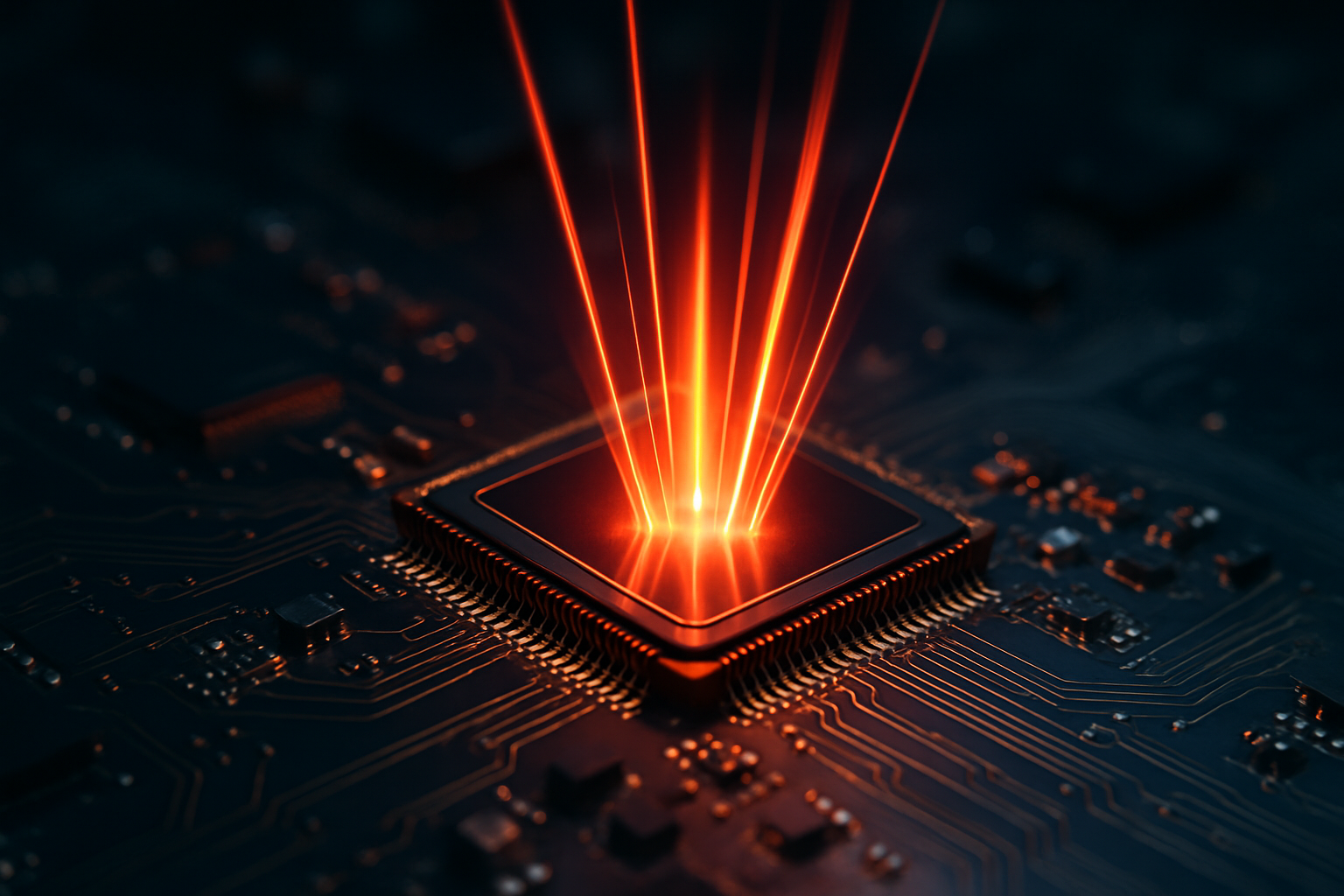Photonic Circuits: The Light-Speed Future of Computing
In the ever-evolving landscape of computer technology, a groundbreaking innovation is poised to revolutionize the way we process and transmit data. Photonic circuits, which use light instead of electricity to carry information, are emerging as a game-changing solution to the limitations of traditional electronic circuits. This cutting-edge technology promises to dramatically increase processing speeds, reduce energy consumption, and pave the way for a new era of ultra-fast, highly efficient computing.

Breaking the Silicon Ceiling
Traditional silicon-based electronic circuits have been the cornerstone of computing for over half a century. However, as we approach the physical limits of silicon technology, the industry has been searching for alternatives to continue the upward trajectory of computing power. Photonic circuits offer a promising solution, capable of overcoming many of the limitations faced by their electronic counterparts.
One of the key advantages of photonic circuits is their ability to operate at much higher frequencies than electronic circuits. While electronic signals are limited by factors such as resistance and capacitance, light signals can be modulated at frequencies well into the terahertz range. This translates to data transfer rates that could potentially reach petabits per second – a thousand times faster than current top-of-the-line electronic systems.
Energy Efficiency: A Green Revolution in Computing
In addition to speed, photonic circuits offer significant improvements in energy efficiency. Electronic circuits generate heat as electrons move through resistive materials, requiring elaborate cooling systems in data centers and high-performance computers. Photonic circuits, on the other hand, produce minimal heat, potentially slashing energy consumption by up to 80% in some applications.
This increased efficiency could have far-reaching implications for the tech industry and beyond. Data centers, which currently consume about 1% of global electricity, could see dramatic reductions in their carbon footprint. Mobile devices could benefit from extended battery life, while high-performance computing systems could achieve unprecedented levels of processing power without the need for complex cooling solutions.
Overcoming Technical Hurdles
Despite the promising potential of photonic circuits, several technical challenges must be overcome before they can be widely adopted. One of the main hurdles is the integration of photonic components with existing electronic systems. While progress has been made in creating hybrid electro-optical chips, achieving seamless integration at scale remains a significant challenge.
Another obstacle is the miniaturization of photonic components. Unlike electronic components, which can be scaled down to nanometer sizes, photonic devices are limited by the wavelength of light. Researchers are exploring novel materials and structures, such as plasmonics and metamaterials, to overcome these size limitations and create more compact photonic circuits.
The Road to Commercialization
As with any emerging technology, the path from laboratory to market is fraught with challenges. However, several companies and research institutions are making significant strides in commercializing photonic circuit technology. Industry giants like Intel and IBM have invested heavily in photonics research, while startups like Lightmatter and Luminous Computing are developing specialized photonic AI accelerators.
The potential market for photonic circuits is vast, with applications ranging from data centers and telecommunications to autonomous vehicles and quantum computing. While precise pricing for photonic circuit products is still uncertain, industry analysts predict that the market for integrated photonics could reach tens of billions of dollars by the end of the decade.
A Glimpse into the Future
As photonic circuit technology continues to mature, we can expect to see a wide range of applications that leverage its unique capabilities. Ultra-fast, low-latency networks could enable new forms of immersive virtual and augmented reality experiences. AI and machine learning systems could process vast amounts of data in real-time, leading to breakthroughs in fields such as healthcare and scientific research.
The integration of photonics with other emerging technologies, such as neuromorphic computing and quantum information processing, could lead to entirely new computing paradigms. As we stand on the brink of this light-speed revolution, one thing is clear: photonic circuits have the potential to reshape the technological landscape and usher in a new era of computing power and efficiency.





